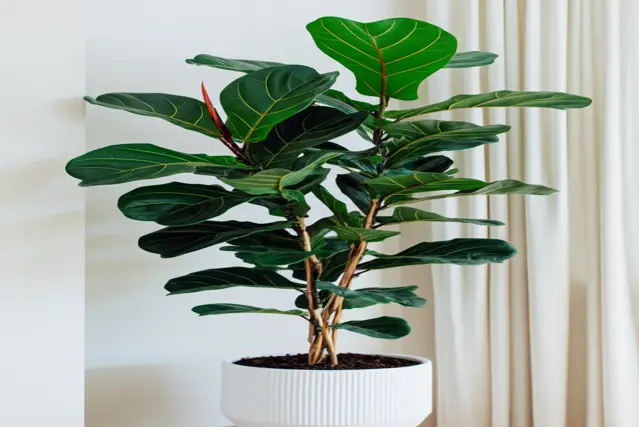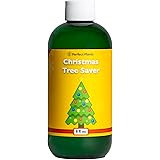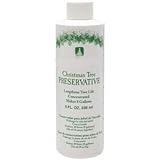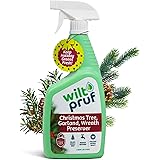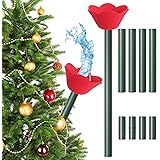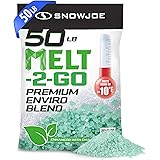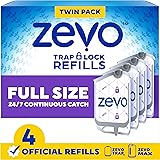The Fiddle Leaf Fig (Ficus lyrata) has captured the hearts of plant lovers everywhere with its large, violin-shaped leaves and striking presence. These beauties can transform any room into a lush, vibrant oasis. However, their reputation for being finicky often precedes them, and one of the biggest concerns for new and seasoned plant parents alike is: How often do I really need to water my Fiddle Leaf Fig indoors?
Watering might seem like a simple task, but with Fiddle Leaf Figs, it’s a delicate balancing act. Overwatering and underwatering are two of the most common mistakes, and both can lead to a cascade of problems, from leaf drop to root rot. This comprehensive guide, updated for 2024, will provide you with the knowledge and practical tips you need to master the art of watering your Fiddle Leaf Fig and keep it thriving indoors. We’ll delve into the latest watering trends, understand the factors influencing your plant’s needs, and provide a clear roadmap to success.
Understanding the Fiddle Leaf Fig: A Quick Overview
Before diving into watering schedules, it’s crucial to understand the Fiddle Leaf Fig’s natural environment and its basic needs. This will help you tailor your watering approach to its specific requirements. Fiddle Leaf Figs originate from the tropical rainforests of West Africa, where they grow as epiphytes or on the forest floor. This environment is characterized by:
- High humidity
- Warm temperatures
- Well-draining soil
- Filtered sunlight
These conditions influence how the plant absorbs and uses water. Mimicking these conditions indoors as closely as possible is key to its health and well-being.
The Golden Rule: Water When the Topsoil is Dry
The most important principle to remember when watering a Fiddle Leaf Fig is to water only when the top 1-2 inches of soil are dry. This is a general guideline, and the exact depth might vary depending on the size of your pot and the overall environment. Overwatering is a much more common problem than underwatering, so it’s always better to err on the side of caution.
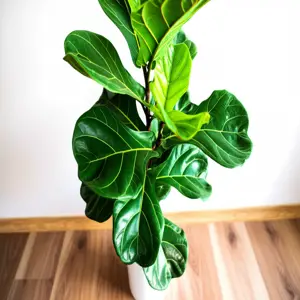
fiddle leaf fig care
This principle is based on the need to allow the roots to breathe. When the soil is constantly wet, the roots are deprived of oxygen, which leads to root rot. Allowing the topsoil to dry out slightly allows for better aeration and prevents the buildup of harmful pathogens.
Read More: About Should I Repot an Indoor Plant Soon After Buying?
How to Check the Soil Moisture
There are several ways to check the soil moisture of your Fiddle Leaf Fig:
- The Finger Test: This is the simplest and most common method. Insert your finger about 1-2 inches into the soil. If the soil feels dry to the touch, it’s time to water. If it feels damp or moist, wait a few more days.
- Moisture Meter: A moisture meter is a handy tool that measures the moisture level of the soil. Simply insert the probe into the soil, and the meter will give you a reading. Aim for a reading of 3-4 (slightly dry) before watering. You can find these at most garden centers or online retailers.
- The Lift Test: Get to know the weight of your pot when the soil is fully saturated after watering. Then, lift the pot periodically. When it feels significantly lighter, it’s likely time to water. This takes practice, but it’s a good skill to develop.
- Wooden Chopstick/Skewer: Insert a wooden chopstick or skewer deep into the soil. Pull it out and examine it. If soil clings to it and it feels damp, the soil is still moist. If it comes out clean and dry, it’s time to water.
Experiment with these methods to find what works best for you. The finger test is usually sufficient, but a moisture meter can be especially helpful for beginners or those who tend to overwater.
Creating the Ideal Watering Schedule
There’s no one-size-fits-all watering schedule for Fiddle Leaf Figs. The frequency of watering will depend on several factors, including:
- Season: Plants generally need more water during the growing season (spring and summer) than during the dormant season (fall and winter).
- Pot Size: Larger pots retain more moisture than smaller pots.
- Light Exposure: Plants in brighter light will dry out faster than plants in lower light.
- Humidity: Higher humidity levels reduce the rate of water loss from the plant and soil.
- Temperature: Warmer temperatures increase the rate of evaporation.
- Soil Type: Well-draining soil dries out faster than dense, compacted soil.
- Plant Size: Larger plants with more foliage will need more water than smaller plants.
Read More:
Considering these factors, here’s a general guideline for watering frequency:
- Spring/Summer: Typically, every 1-2 weeks.
- Fall/Winter: Typically, every 2-4 weeks.
Remember, these are just starting points. Always check the soil moisture before watering, regardless of the season.
Adjusting Your Watering Schedule Based on the Season
The change of seasons significantly impacts your Fiddle Leaf Fig’s water needs. Here’s a more detailed breakdown:
Spring: Awakening and Growth
As the days get longer and the temperatures rise, your Fiddle Leaf Fig will emerge from its winter dormancy and begin to actively grow. This means it will need more water and nutrients to support new leaf growth. You’ll likely notice new growth at the top of the plant. It’s a beautiful sign that your plant is happy!
- Watering: Increase the frequency of watering as needed. Check the soil moisture every few days and water when the top 1-2 inches are dry.
- Fertilizing: Begin fertilizing your plant with a balanced liquid fertilizer diluted to half strength. Fertilize every 2-4 weeks during the growing season. Link to fertilizer guide here.
- Humidity: Maintain adequate humidity levels by misting the leaves regularly or using a humidifier. Spring tends to be drier than summer.
Summer: Peak Growing Season
Summer is the peak growing season for Fiddle Leaf Figs. They will be actively producing new leaves and require consistent watering and fertilization. Pay close attention to the plant’s overall health and adjust your watering schedule as needed.
- Watering: Water thoroughly when the top 1-2 inches of soil are dry. You may need to water more frequently during heat waves or periods of prolonged sunshine.
- Fertilizing: Continue fertilizing every 2-4 weeks.
- Humidity: Maintain high humidity levels, especially in drier climates.
- Sunlight: Ensure your plant receives bright, indirect light. Protect it from direct sunlight, which can scorch the leaves.
Fall: Preparing for Dormancy
As the days shorten and temperatures cool, your Fiddle Leaf Fig will begin to slow down its growth and prepare for winter dormancy. Gradually reduce watering and fertilization to match its reduced needs.
- Watering: Reduce the frequency of watering. Allow the top 2-3 inches of soil to dry out before watering.
- Fertilizing: Reduce or stop fertilizing altogether.
- Light: Ensure your plant still receives adequate light. You may need to move it closer to a window as the days get shorter.
Winter: Dormancy and Rest
Winter is a period of dormancy for Fiddle Leaf Figs. They will require very little water and fertilization. Avoid overwatering during this time, as it can easily lead to root rot.
- Watering: Water sparingly, only when the top 3-4 inches of soil are dry. This may be as infrequent as every 3-4 weeks, or even longer.
- Fertilizing: Do not fertilize during the winter months.
- Humidity: Maintain adequate humidity levels, as indoor heating can dry out the air.
- Temperature: Avoid placing your plant near drafts or heating vents, as this can stress it.
Real-World Example: Seasonal Watering Adjustments
Let’s say you live in a region with distinct seasons. During the summer, you might water your Fiddle Leaf Fig every 7-10 days. However, in the winter, you might only need to water it every 3-4 weeks. The key is to observe your plant closely and adjust your watering schedule accordingly.
Another example: I have a Fiddle Leaf Fig in my living room that gets bright, indirect light. In the summer, I water it about every 10 days. In the winter, with the shorter days and drier air from the heater, I might stretch that to every 3 weeks. I always check the soil moisture before watering, just to be sure.
How to Water Your Fiddle Leaf Fig Properly
The method of watering is just as important as the frequency. Here’s how to water your Fiddle Leaf Fig correctly:
- Water Thoroughly: When you water, saturate the soil completely until water drains out of the drainage holes at the bottom of the pot. This ensures that all the roots are adequately hydrated.
- Water Slowly: Pour the water slowly and evenly over the soil surface. Avoid splashing water on the leaves, as this can promote fungal growth.
- Discard Excess Water: After watering, allow the excess water to drain out of the pot for at least 30 minutes. Then, discard the excess water that has collected in the saucer. Never let your Fiddle Leaf Fig sit in standing water, as this can lead to root rot.
- Use Room Temperature Water: Avoid using cold water, as this can shock the roots. Use room temperature water that has been sitting out for a few hours to allow chlorine and other chemicals to dissipate.
The Importance of Drainage
Proper drainage is essential for the health of your Fiddle Leaf Fig. Make sure your pot has adequate drainage holes to allow excess water to escape. You can also add a layer of gravel or pebbles to the bottom of the pot to improve drainage.
If your pot doesn’t have drainage holes, consider repotting your plant into a pot that does. Alternatively, you can use a liner inside the decorative pot and remove it to water the plant, allowing the excess water to drain before returning it to the decorative pot.
Choosing the Right Soil
The type of soil you use for your Fiddle Leaf Fig can significantly impact its watering needs. Fiddle Leaf Figs prefer well-draining soil that retains some moisture but doesn’t become waterlogged.
A good soil mix for Fiddle Leaf Figs typically consists of:
- Potting Soil: Provides a base for the mix and retains moisture.
- Perlite: Improves drainage and aeration.
- Coco Coir or Peat Moss: Helps retain moisture and adds organic matter.
- Orchid Bark: Provides additional drainage and aeration.
You can either purchase a pre-mixed Fiddle Leaf Fig soil blend or create your own. A common ratio is 2 parts potting soil, 1 part perlite, and 1 part coco coir or peat moss. The addition of orchid bark, though optional, can further improve drainage and aeration, particularly for those prone to overwatering.
DIY Soil Mix Example
Here’s a simple recipe for a DIY Fiddle Leaf Fig soil mix:
- 2 parts high-quality potting soil
- 1 part perlite
- 1 part coco coir
- Optional: 1/2 part orchid bark
Mix these ingredients thoroughly before repotting your plant.
Recognizing the Signs of Overwatering and Underwatering
Knowing how to recognize the signs of overwatering and underwatering is crucial for maintaining the health of your Fiddle Leaf Fig. Early detection and correction can prevent serious problems.
Signs of Overwatering
Overwatering is one of the most common problems with Fiddle Leaf Figs. Here are some signs to look out for:
- Yellowing Leaves: Especially on the lower parts of the plant. The yellowing often starts with brown spots that gradually expand.
- Brown Spots: Soft, mushy brown spots on the leaves, often with a yellow halo.
- Leaf Drop: Leaves falling off even though they appear healthy.
- Wilting: Drooping leaves, even when the soil is wet.
- Mold or Fungus: Visible mold or fungus on the soil surface.
- Root Rot: A foul smell emanating from the soil, indicating root rot (this is a serious issue).
If you suspect your Fiddle Leaf Fig is overwatered, take the following steps:
- Stop Watering: Allow the soil to dry out completely before watering again.
- Improve Drainage: Make sure the pot has adequate drainage holes and that the soil is well-draining.
- Repot: If the soil is severely waterlogged or you suspect root rot, repot the plant into fresh, dry soil. Carefully inspect the roots and remove any that are black, mushy, or rotten.
- Improve Air Circulation: Increase air circulation around the plant to help the soil dry out faster. You can use a fan or move the plant to a better-ventilated area.
Signs of Underwatering
While less common than overwatering, underwatering can also harm your Fiddle Leaf Fig. Here are some signs to look out for:
- Dry, Crispy Leaves: Especially on the edges of the leaves.
- Drooping Leaves: Leaves that are limp and drooping, especially when the soil is dry.
- Stunted Growth: A lack of new growth.
- Soil Pulling Away From the Sides of the Pot: This indicates that the soil is very dry and has shrunk.
If you suspect your Fiddle Leaf Fig is underwatered, take the following steps:
- Water Thoroughly: Water the plant thoroughly until water drains out of the drainage holes.
- Soak the Pot: If the soil is very dry, you can soak the pot in a basin of water for 30 minutes to an hour to rehydrate the soil.
- Increase Humidity: Increase humidity levels to help the plant retain moisture.
- Check the Soil: Ensure the soil is not hydrophobic (water-repellent). If water beads up on the surface instead of soaking in, you may need to repot the plant with fresh soil.
Table: Overwatering vs. Underwatering
| Symptom | Overwatering | Underwatering |
|---|---|---|
| Leaf Color | Yellowing, brown spots (soft/mushy) | Dry, crispy edges |
| Leaf Texture | Soft, mushy | Brittle, dry |
| Leaf Drop | Yes, even healthy-looking leaves | Yes, after becoming dry and crispy |
| Soil Condition | Constantly wet, may have mold | Dry, pulling away from the pot |
| Overall Appearance | Wilting, drooping (even when wet) | Drooping (when dry), stunted growth |
Water Quality Matters
The quality of the water you use can also affect the health of your Fiddle Leaf Fig. Avoid using tap water that is high in chlorine, fluoride, or other chemicals, as these can damage the plant’s roots and leaves.
The best water to use for your Fiddle Leaf Fig is:
- Rainwater: The purest and most natural option.
- Distilled Water: Free of minerals and chemicals.
- Filtered Water: Removes impurities and chemicals from tap water.
- Tap Water (Settled): If you must use tap water, let it sit out for 24-48 hours to allow chlorine to evaporate.
Hard water can also be problematic, as the mineral buildup can affect the soil pH and nutrient availability. If you have hard water, consider using a water softener or switching to a different water source.
Humidity and Watering
Humidity plays a crucial role in the health of your Fiddle Leaf Fig. These plants thrive in humid environments, so maintaining adequate humidity levels is essential, especially during the dry winter months. Proper humidity can also influence your watering schedule, slowing down the evaporation process.
Here are some ways to increase humidity around your Fiddle Leaf Fig:
- Misting: Mist the leaves regularly with water.
- Humidifier: Use a humidifier to increase the overall humidity in the room.
- Pebble Tray: Place the pot on a tray filled with pebbles and water. As the water evaporates, it will increase the humidity around the plant.
- Grouping Plants: Grouping plants together creates a microclimate with higher humidity.
- Move to a Humid Room: If possible, move your plant to a naturally humid room, such as a bathroom or kitchen.
Aim for a humidity level of 40-60% for your Fiddle Leaf Fig. You can use a hygrometer to monitor the humidity in your home.
Real-World Example: Humidity Control
I live in a dry climate, so I have to be extra diligent about maintaining humidity for my Fiddle Leaf Fig. I use a humidifier during the winter months and mist the leaves regularly. I’ve also placed the pot on a pebble tray to further increase humidity. Before implementing this, I was struggling with leaf drop, but now my Fiddle Leaf Fig is thriving.
Pot Size and Repotting
The size of your pot and your repotting schedule can influence your watering habits. A too-small pot will dry out much faster, requiring more frequent watering. Conversely, a too-large pot can retain too much moisture and lead to root rot. Knowing when and how to repot your Fiddle Leaf Fig is crucial.
Choosing the Right Pot Size
When selecting a pot for your Fiddle Leaf Fig, choose one that is slightly larger than the root ball. As a general rule, increase the pot size by 2-4 inches in diameter when repotting. The new pot should have ample drainage holes. Using terra cotta pots can also help with drainage, as they are porous and allow excess moisture to evaporate. Consider the mature size of your Fiddle Leaf Fig; a very large plant will require a substantial pot to support its growth.
When to Repot
Repotting is necessary when:
- The roots are circling the bottom of the pot.
- The plant is root-bound (the roots are tightly packed together).
- The soil is depleted of nutrients and is no longer draining well.
- The plant is outgrowing its current pot.
Repotting is best done in the spring or early summer when the plant is actively growing. This gives the plant time to recover from the stress of repotting and establish new roots before the dormant season.
How to Repot
- Gently remove the Fiddle Leaf Fig from its current pot.
- Loosen the roots and remove any circling roots.
- Inspect the roots for signs of root rot and remove any affected roots.
- Place a layer of fresh soil in the new pot.
- Position the plant in the center of the pot and fill in the remaining space with soil.
- Water the plant thoroughly after repotting.
Post-Repotting Care
After repotting, monitor your Fiddle Leaf Fig closely. Avoid fertilizing for the first few weeks to prevent root burn. Keep the soil consistently moist but not waterlogged. Provide bright, indirect light and maintain adequate humidity levels. It may take a few weeks for the plant to adjust to its new pot, so be patient and observe its growth.
Read More: About Comparing Monstera Creme Brulee vs Thai Constellation
Common Mistakes to Avoid
Even experienced plant owners can make mistakes when caring for Fiddle Leaf Figs. Here are some common mistakes to avoid when watering:
- Overwatering: The most common mistake. Always check the soil moisture before watering.
- Underwatering: Can lead to dry, crispy leaves and stunted growth.
- Using Cold Water: Can shock the roots. Use room temperature water.
- Watering the Leaves: Can promote fungal growth. Water the soil directly.
- Using Poorly Draining Soil: Can lead to waterlogged soil and root rot.
- Ignoring Humidity: Fiddle Leaf Figs need high humidity levels.
- Not Adjusting Watering with the Seasons: Water needs change significantly between growing and dormant seasons.
By avoiding these common mistakes, you can significantly improve the health and well-being of your Fiddle Leaf Fig.
Fiddle Leaf Figs and Current Trends in Plant Care
The world of plant care is constantly evolving with new research and trends. Here’s a look at some current trends relevant to Fiddle Leaf Fig care:
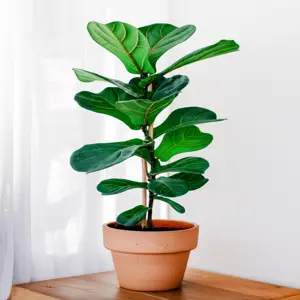
indoor plant watering
- Self-Watering Pots: These pots can help prevent overwatering and underwatering by providing a consistent supply of water to the roots. They are particularly useful for beginners or those who travel frequently.
- Smart Plant Monitors: These devices measure soil moisture, light levels, and temperature, providing valuable data to help you optimize your plant care routine. They can send alerts to your phone when your plant needs water or other care.
- Organic Fertilizers: Many plant owners are switching to organic fertilizers to promote sustainable plant care. Organic fertilizers are derived from natural sources and are less likely to harm the environment. ***_Link to Organic Fertilizer Guide Here_***
- Beneficial Microbes: Some plant owners are adding beneficial microbes to the soil to improve root health and nutrient uptake. These microbes can help protect the plant from diseases and pests.
- Focus on Sustainability: There’s a growing emphasis on using sustainable and eco-friendly practices in plant care, including using recycled pots, composting, and avoiding pesticides.
Staying up-to-date with these trends can help you provide the best possible care for your Fiddle Leaf Fig and contribute to a more sustainable approach to plant care.
Fiddle Leaf Figs and Regulations (Where Applicable)
While Fiddle Leaf Figs are generally not subject to strict regulations, there are a few considerations to keep in mind:
- Plant Import/Export: If you are importing or exporting a Fiddle Leaf Fig, you may need to comply with phytosanitary regulations to prevent the spread of plant diseases and pests. Check with your local authorities for specific requirements.
- Pesticide Use: If you use pesticides on your Fiddle Leaf Fig, follow all label instructions and regulations to protect yourself, your family, and the environment. Consider using organic or natural pest control methods whenever possible.
- Invasive Species: In some regions, certain plants are classified as invasive species and are subject to regulations. While Fiddle Leaf Figs are not typically considered invasive, it’s always a good idea to check with your local authorities to ensure you are not violating any regulations.
It’s important to be aware of these regulations and follow them to ensure you are caring for your Fiddle Leaf Fig responsibly.
Troubleshooting Common Problems
Even with the best care, your Fiddle Leaf Fig may encounter problems from time to time. Here’s a troubleshooting guide for common issues:
- Leaf Drop: Can be caused by overwatering, underwatering, sudden changes in temperature, drafts, low humidity, or insufficient light.
- Brown Spots: Can be caused by overwatering, underwatering, fungal infections, or sunburn.
- Yellowing Leaves: Can be caused by overwatering, nutrient deficiencies, or pests.
- Stunted Growth: Can be caused by insufficient light, lack of nutrients, or root-bound conditions.
- Pests: Common pests include spider mites, mealybugs, and scale. Treat infestations promptly with insecticidal soap or neem oil.
By identifying the cause of the problem and taking appropriate action, you can help your Fiddle Leaf Fig recover and thrive.
Advanced Watering Techniques
Once you’ve mastered the basics of watering, you can explore some advanced techniques to further optimize your plant care routine:
- Bottom Watering: Place the pot in a basin of water and allow the soil to absorb water from the bottom up. This encourages deep root growth and prevents surface compaction.
- Watering with Compost Tea: Compost tea is a nutrient-rich liquid that can improve soil health and promote plant growth. Use compost tea to water your Fiddle Leaf Fig every few months.
- Calibrating your Watering Schedule: Keep a log of when you water and how the plant responds. Over time, you’ll learn its individual watering needs and be able to anticipate when it needs a drink.
- Using a Soil Conditioner: A soil conditioner can improve drainage, aeration, and water retention. Add a soil conditioner to your soil mix when repotting.
These advanced techniques can help you take your Fiddle Leaf Fig care to the next level.
DIY Solutions for Common Issues
Often, you can address common Fiddle Leaf Fig issues with simple, homemade solutions.
- Neem Oil Spray: Mix neem oil with water and a few drops of dish soap to create a natural insecticide.
- Cinnamon Powder: Sprinkle cinnamon powder on the soil to prevent fungal growth.
- Epsom Salt Solution: Mix Epsom salt with water and use it to water your plant to provide magnesium, which can help with leaf greening.
- Banana Peel Fertilizer: Bury banana peels in the soil to provide potassium, which can promote strong growth.
- Vinegar Solution: Use a diluted vinegar solution to wipe the leaves and remove hard water spots.
These DIY solutions are a cost-effective and environmentally friendly way to care for your Fiddle Leaf Fig.
Expert Tips from Fiddle Leaf Fig Enthusiasts
To provide even more insight, here are some expert tips from experienced Fiddle Leaf Fig enthusiasts:
- “Don’t be afraid to experiment with different watering schedules. Every plant is different, so find what works best for yours.” – Sarah, @fiddleleaffigfanatic
- “Pay attention to the leaves. They will tell you if your plant is happy or not.” – John, @plantdad
- “Invest in a good moisture meter. It’s a lifesaver!” – Emily, @houseplantlover
- “Don’t give up! Fiddle Leaf Figs can be challenging, but they are worth the effort.” – David, @urbanjungle
- “Rotate your plant regularly to ensure even light exposure and prevent it from leaning towards the window.” – Maria, @greenliving
These tips offer valuable insights from those who have successfully cared for Fiddle Leaf Figs for years.
Future Trends in Fiddle Leaf Fig Care
As technology and research continue to advance, we can expect to see even more innovations in Fiddle Leaf Fig care. Here are some potential future trends:
- AI-Powered Plant Care: Artificial intelligence could be used to analyze plant data and provide personalized care recommendations.
- Gene Editing: Gene editing could be used to create Fiddle Leaf Figs that are more resistant to diseases and pests.
- 3D-Printed Pots: 3D printing could be used to create custom pots that optimize drainage, aeration, and root growth.
- Remote Monitoring: Sensors could be used to remotely monitor plant health and send alerts to your phone when action is needed.
- Sustainable Plant Care Practices Become Mainstream: Continued emphasis on eco-friendly fertilizers, pest control, and soil management techniques.
These future trends promise to make Fiddle Leaf Fig care even easier and more effective.
The Social Media Impact on Fiddle Leaf Fig Care
Social media platforms like Instagram, Pinterest, and YouTube have had a significant impact on the popularity and care of Fiddle Leaf Figs. These platforms have made it easier for plant owners to share tips, ask questions, and connect with other enthusiasts.
Here are some ways social media has influenced Fiddle Leaf Fig care:
- Increased Awareness: Social media has raised awareness of Fiddle Leaf Figs and made them more accessible to a wider audience.
- Community Support: Online communities provide a supportive environment for plant owners to ask questions and share their experiences.
- Visual Inspiration: Social media provides visual inspiration for styling Fiddle Leaf Figs in different homes and spaces.
- Educational Content: Many plant influencers create educational content on social media, providing tips and advice on Fiddle Leaf Fig care.
- Trend Setting: Social media platforms often dictate current trends in plant care, influencing which products are popular and which techniques are used.
However, it’s important to be critical of information you find on social media and to verify it with reliable sources before applying it to your own plant care routine. Always consider the specific needs of your plant and adjust your care accordingly.
Statistics and Data on Houseplant Ownership
The popularity of houseplants, including Fiddle Leaf Figs, has been on the rise in recent years. Here are some relevant statistics and data:
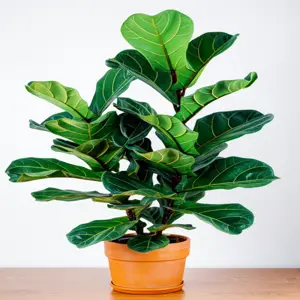
plant care tips
- According to a 2023 survey by the National Gardening Association, nearly 77% of U.S. households participate in some form of gardening, including indoor plants.
- Millennials and Gen Z are driving the houseplant trend, with many using plants to decorate their homes and improve their well-being.
- The global houseplant market is projected to reach $28.7 billion by 2027, according to a report by Global Industry Analysts Inc.
- Studies have shown that houseplants can improve air quality, reduce stress, and boost productivity.
- The Fiddle Leaf Fig consistently ranks among the most popular houseplants on social media platforms like Instagram and Pinterest.
These statistics highlight the growing interest in houseplants and the positive impact they can have on our lives.
FAQ: Watering Fiddle Leaf Figs Indoors
Here are some frequently asked questions about watering Fiddle Leaf Figs indoors:
How do I know if I’m overwatering my Fiddle Leaf Fig?
Signs of overwatering include yellowing leaves (especially at the bottom), soft brown spots on the leaves, leaf drop even when the leaves look healthy, and mold or fungus on the soil surface.
How do I know if I’m underwatering my Fiddle Leaf Fig?
Signs of underwatering include dry, crispy leaves (especially at the edges), drooping leaves when the soil is dry, stunted growth, and the soil pulling away from the sides of the pot.
What type of water should I use for my Fiddle Leaf Fig?
The best water to use is rainwater, distilled water, or filtered water. If you must use tap water, let it sit out for 24-48 hours to allow chlorine to evaporate.
How often should I water my Fiddle Leaf Fig in the winter?
During the winter, when the plant is dormant, you should water it sparingly, only when the top 3-4 inches of soil are dry. This may be as infrequent as every 3-4 weeks.
How often should I water my Fiddle Leaf Fig in the summer?
During the summer, your Fiddle Leaf Fig will be in its peak growing season, meaning it will need more frequent watering to support new growth and compensate for faster evaporation due to warmer temperatures.
Conclusion: Mastering the Art of Watering Your Fiddle Leaf Fig
Caring for a Fiddle Leaf Fig may seem daunting at first, especially when it comes to watering. However, with the right knowledge and a little patience, you can keep your plant thriving for years to come. The key takeaways to remember are:
- Water Only When Needed – Always check the top 1-2 inches of soil before watering. If it’s dry, water thoroughly; if not, wait a few more days.
- Adjust for Seasons – Water more frequently in spring and summer (every 1-2 weeks) and reduce in fall and winter (every 2-4 weeks).
- Use the Right Soil & Pot – Well-draining soil and a pot with drainage holes are essential to prevent root rot.
- Monitor Humidity & Light – Higher humidity and bright, indirect light help your plant stay healthy and reduce water stress.
- Watch for Signs – Yellowing leaves, brown spots, and drooping can indicate overwatering or underwatering—adjust your care accordingly.
By following these guidelines and paying close attention to your plant’s needs, you’ll develop an intuitive sense for when and how much to water. Remember, every Fiddle Leaf Fig is unique, so don’t be afraid to tweak your routine based on its response.
Final Thought: Patience & Observation Are Key
The most successful plant parents are those who observe their plants closely and adjust care as needed. Your Fiddle Leaf Fig won’t thrive on a rigid schedule—it thrives on your attention and care.
So, take a deep breath, enjoy the process, and watch as your Fiddle Leaf Fig grows into a stunning, lush centerpiece in your home. Happy planting! 🌿
Auto Amazon Links: No products found.
Perfect Plants Christmas Tree Saver 8oz. | Easy Use Xmas Tree Preserver Food | Have Healthy Green Christmas Trees All Holiday Season
$9.97 (as of December 18, 2025 05:25 GMT +00:00 - More info- Product prices and availability are accurate as of the date/time indicated and are subject to change. Any price and availability information displayed on [relevant Amazon Site(s), as applicable] at the time of purchase will apply to the purchase of this product.
FirEver Pure Christmas Tree Food | Preserver Additive & Season Extender for Live Xmas Trees | Keep It Green, Reduce Needle-Drop | Miracle Freshness (8 oz)
$14.99 (as of December 18, 2025 05:25 GMT +00:00 - More info- Product prices and availability are accurate as of the date/time indicated and are subject to change. Any price and availability information displayed on [relevant Amazon Site(s), as applicable] at the time of purchase will apply to the purchase of this product.
Rocky Mountain Goods Christmas Tree Food - 8 oz Tree Preservative - Reduce Needle Drop - Greener Scent - Fir, Pine, Spruce Trees - Extend Tree Life
$9.95 (as of December 18, 2025 05:25 GMT +00:00 - More info- Product prices and availability are accurate as of the date/time indicated and are subject to change. Any price and availability information displayed on [relevant Amazon Site(s), as applicable] at the time of purchase will apply to the purchase of this product.
Wilt-Pruf® Christmas Tree/Cutting Preserver Spray |Preserves Christmas Trees, Wreaths, Garlands, Cuttings and Carved Pumpkins | Reduces Needle Drop | Keeps Cut Trees Fresh Longer | Natural (32 oz)
$21.99 (as of December 18, 2025 05:25 GMT +00:00 - More info- Product prices and availability are accurate as of the date/time indicated and are subject to change. Any price and availability information displayed on [relevant Amazon Site(s), as applicable] at the time of purchase will apply to the purchase of this product.
EZMeetU Christmas Tree Watering Funnel, 47 Inch Flower Shape Adjustable 6 Section Design, Christmas Tree Watering System, Christmas Tree Waterer, Long Funnel Wide Opening Reusable, Plant Watering Tool
$16.99 (as of December 18, 2025 05:25 GMT +00:00 - More info- Product prices and availability are accurate as of the date/time indicated and are subject to change. Any price and availability information displayed on [relevant Amazon Site(s), as applicable] at the time of purchase will apply to the purchase of this product.
Snow Joe Premium Enviro Blend Ice Melt, Green-Coated Deicer Crystals, 50 lb - Safer Melter for Vegetation, Concrete & Metals w/ Anti-Corrosion Calcium Magnesium Acetate
$32.97 (as of December 12, 2025 19:27 GMT +00:00 - More info- Product prices and availability are accurate as of the date/time indicated and are subject to change. Any price and availability information displayed on [relevant Amazon Site(s), as applicable] at the time of purchase will apply to the purchase of this product.
Muddy Mat® Shown on TV Super Absorbent Microfiber Dog Door Mat for Muddy Paws, Non-Slip Washable Pet Rug, Quick Dry Chenille Entryway Carpet, Machine Washable Indoor Outdoor mat, Grey 30"x19"
$24.95 (as of December 12, 2025 19:27 GMT +00:00 - More info- Product prices and availability are accurate as of the date/time indicated and are subject to change. Any price and availability information displayed on [relevant Amazon Site(s), as applicable] at the time of purchase will apply to the purchase of this product.
ivtivfu Rolling Grill Basket, Removable Wooden Handle, 304 Stainless Steel, Nesting BBQ Tools, Smoker Grilling Accessories for Vegetable, Outdoor Cooking Camping, Birthday Gifts for Men Dad Husband
$25.99 (as of December 12, 2025 19:27 GMT +00:00 - More info- Product prices and availability are accurate as of the date/time indicated and are subject to change. Any price and availability information displayed on [relevant Amazon Site(s), as applicable] at the time of purchase will apply to the purchase of this product.
XXXFLOWER Plant Terrarium with Wooden Stand, Air Planter Bulb Glass Vase Metal Swivel Holder Retro Tabletop for Hydroponics Home Garden Office Decoration - 3 Bulb Vase
$18.98 (as of December 12, 2025 19:27 GMT +00:00 - More info- Product prices and availability are accurate as of the date/time indicated and are subject to change. Any price and availability information displayed on [relevant Amazon Site(s), as applicable] at the time of purchase will apply to the purchase of this product.
Zevo Flying Insect Trap Official Refill Cartridges - Fits Both Zevo Trap & MAX Indoor Fly Trap - Authentic Trap+Lock Technology to Catch Gnats, House & Fruit Flys (4 Official Refill Cartridges)
$14.97 (as of December 12, 2025 19:27 GMT +00:00 - More info- Product prices and availability are accurate as of the date/time indicated and are subject to change. Any price and availability information displayed on [relevant Amazon Site(s), as applicable] at the time of purchase will apply to the purchase of this product.

